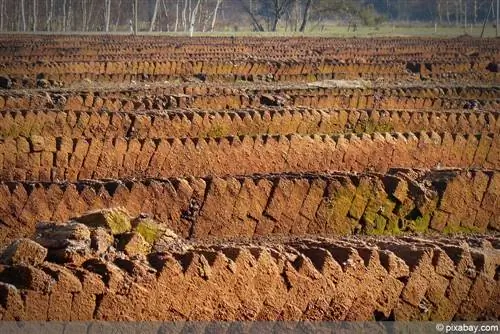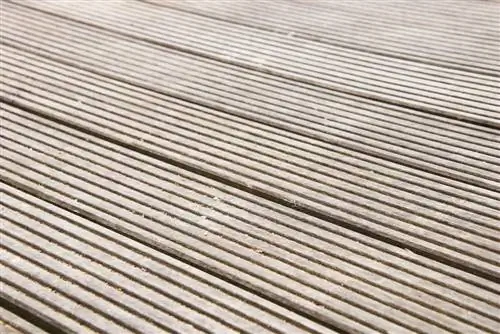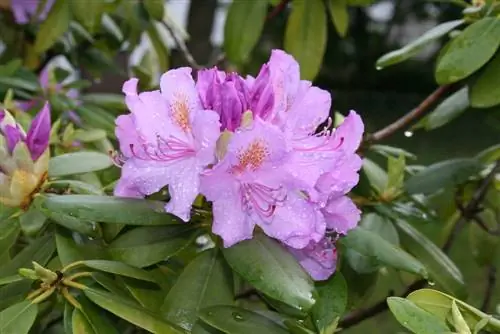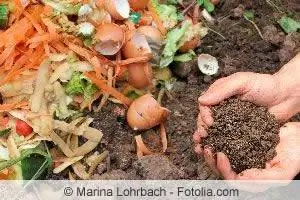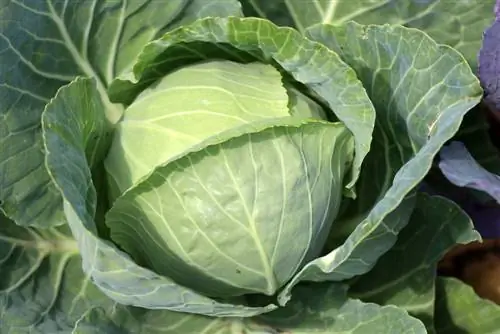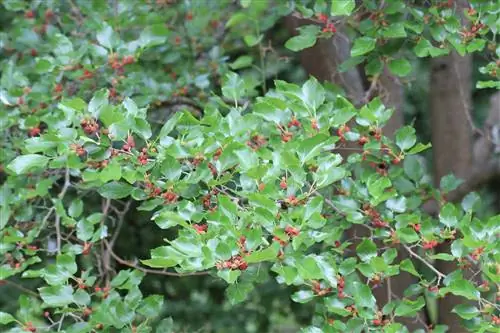- Author admin [email protected].
- Public 2023-12-17 03:39.
- Last modified 2025-01-24 12:45.
Peat is often used to help plants thrive in the garden. A distinction is made here between two types, black and white peat. But what are these types of peat made up of? Are there any major differences? And when should one or the other species be used for your own garden bed. The following article addresses these questions.
Evolution of peat species
In general, every type of peat arises from the deposits in a bog. The plant remains collect here and decompose in the standing water over the years. Over time, more and more nutrients are accumulated, and the dead plant remains cause the lake to silt up more and more over the years. The first thing that is created is the fen, under which the groundwater is still located. Only when the surface separates from the groundwater does the raised bog emerge. In the raised bog there is no longer any groundwater under the individual peat layers. The lowest first layer is coal; only above this can the various types of peat be used for the garden. These are the following:
- A layer of black peat lies above the coal
- The brown peat layer lies above this
- on top is the white peat
A bog takes up to 10,000 years for all layers to form. Since other plants have settled in the moors that cope well with the soil conditions, the emergence and development does not stop. On average, however, only one millimeter of peat layer can be expected per year.
Tip:
There are 271 million hectares of moors known worldwide. In Finland, about a third is peat soil. Nevertheless, its use is controversial, especially in local private gardens.
Black peat origin
Black peat is a very old substance that has matured over thousands of years. This can be found in the moors, which are created from stagnant water and dead plant parts. The moors consist of different layers, with the black peat forming the lowest layer here and is therefore exposed to greater pressure and is more advanced in decomposition, as this is also the oldest layer in a moor. There are moor areas all over the world, but a distinction must be made between fens and raised moors. However, black peat for garden use is only available in raised moors.
Composition
Black peat needs at least 30% organic substances to be eligible for the designation. The remaining 70% consists primarily of water and minerals. Everything that lies underneath in terms of organic substances is called bog soil or moist humus. In addition, this type of peat has a very low pH value between 3 and 4 and is therefore often used for very calcareous garden soils to lower the very high pH value.
Usage
In order for the black peat to be used in the garden bed, it must be frozen wet over the winter. Particularly high-quality commercial garden peat was frozen for a long time. This means that later, when it is placed under the garden soil, it shrinks less and can absorb more water. As a rule, it can then store four times its weight in water. Since garden peat lowers the pH of the soil, it is needed for various plants which include the following:
- all types of azaleas
- Rhododendron
- many types of vegetables
- some potted plants
- Blueberries
- all ericaceous plants
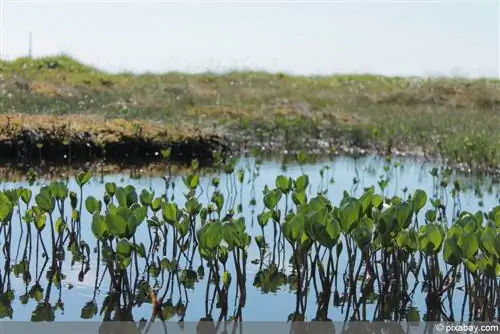
Caution is advised, however, with plants that require a higher pH value to thrive; peat species should be avoided in all respects. The various types of peat are especially added to loamy and sandy soil so that the water absorption capacity is increased.
Tip:
The main property of black peat is to store a lot of water. The peat content in potting soil is now often replaced by compost, wood fibers and humus. Granules are mixed in for water storage.
Unfrozen black peat
If the black peat is not frozen after cutting, then it is virtually unusable for the garden. This can also be found commercially under the name industrial peat. Because it has not been frozen, it shrinks significantly after drying and absorbs almost no water. In addition, after drying, a very hard, so-called pressed peat is created, which is primarily used as fuel.
Tip:
Dry peat is particularly important in whiskey production. Because the m alt is dried here primarily over a peat fire. This is an important flavor carrier for the smoky-phenolic taste.
White peat origin
White peat is the top layer in the raised bog. The decomposed plant parts can still be clearly seen here; this type of peat is not yet as pressed and old as is the case with black peat, which is stored a few layers further down. The dismantling takes place in two different ways:
- It is roughened layer by layer
- milled, so to speak
- dried
- then collected and transported away
- this is how the fine white peat is obtained
- coarse white peat is obtained by the piercing process
- This is the expensive variant of dismantling
Tip:
Due to environmental protection and to preserve the moors, you shouldn't use too many types of peat in your own garden, especially since there are good alternatives made from compost and humus. Therefore, when buying ready-made potting soil, you should pay attention to a low peat content.
Composition
The so-called peat moss is still largely undecomposed and has a pH value of 3 to 4. In comparison, normal garden soil has a pH value between 5 and 6.5. Therefore, white peat is quite acidic and must be adapted for use in the garden. For this purpose, lime is added during production for the trade. Since peat itself is always very low in minerals, the potting soil also needs to be additionally fertilized. In order for it to store the water ideally, the pH value must be at least 3.5.
Features
The name is a little misleading, because the top layer of peat in a raised bog is not white. Nevertheless, it is significantly lighter than the very dark black peat. Due to its composition, this type of peat can store eight times its weight in water. The water is also released very slowly. The soil becomes a carbonic and loose substrate when the white peat is added. It is therefore especially added to sandy and clayey soils.
Usage
White peat is sold in stores mainly individually, usually under the names peat mull or peat litter. So the hobby gardener can make his own mixture with the garden soil. White peat also has the ability to lower the pH value, it aerates the soil and stores water. However, this type of peat must be adapted for use in the garden and is therefore usually sold commercially as a mixture with lime for neutralization and other fertilizer additives for a mineral balance. Only if the garden soil has a very high pH value should the white peat be used pure and folded in. Plants that require acidic soil can particularly benefit from this type of peat. The white peat has the following uses:
- for better ventilation of the garden soil
- for good water storage
- Aquarists like to use white peat
- as substrate for aquarium or terrarium
- good substrate for carnivorous plants
The differences
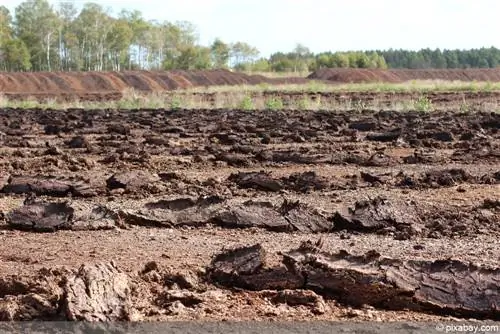
There are therefore not many differences between the two types of peat. Both have a very low pH value and serve to store water and loosen the existing garden soil. Likewise, both types of peat must be mixed with various other substances to be suitable for use in the garden. The main differences are as follows:
- color
- black peat is very dark
- Plant remains can no longer be identified
- white peat, on the other hand, brownish with easily recognizable plant remains
- Water retention is higher with the white peat
- up to eight times your own weight
- With black peat it is “only” four times its own weight
Tip:
In earlier times, gardeners swore by adding different types of peat to the garden soil. However, the trend is now moving away from peat and towards humus, compost or horn shavings. Because all types of peat have only a few nutrients and are therefore not that important for the he althy growth of plants.
growing soil
Young plants, seeds or cuttings are often placed in special growing soil. But black or white peat is also suitable for growing small plants if a little fertilizer is mixed into it. The water-storing properties and the oxygen content in the soil are particularly important for successful propagation. However, after the plants have been rooted, they should be moved to commercial potting soil or garden soil enriched with humus and compost so that more nutrients are available to them for further growth.
Other uses
There are many other uses for peat species, but they have nothing to do with gardening and plants. These are used in personal care and medicine. Moor packs and baths are particularly well-known here, but a peat sauna is also not unusual. But there are other, diverse uses for the biological substance:
- Textiles are made from peat fibers
- Activated carbon for medicine
- as litter in horse stables
- Peat beds for bedwetters
- for mattresses, pillows, duvets as raw materials

